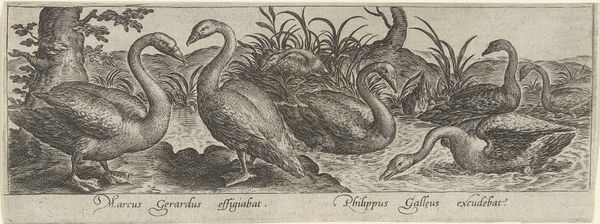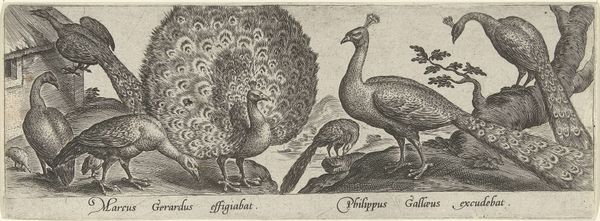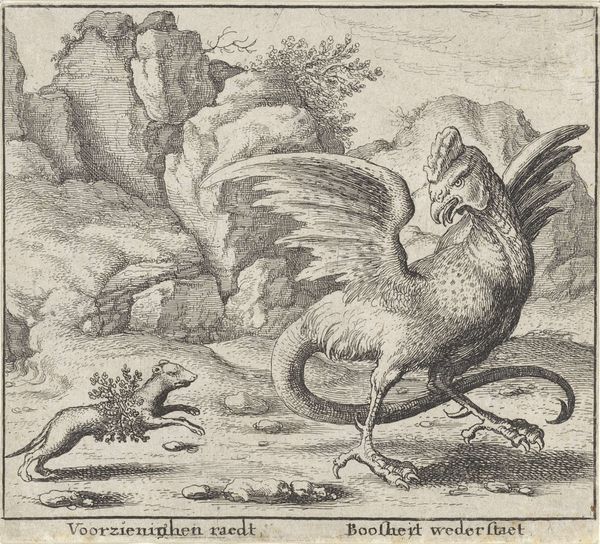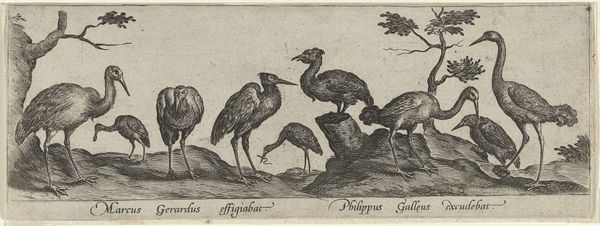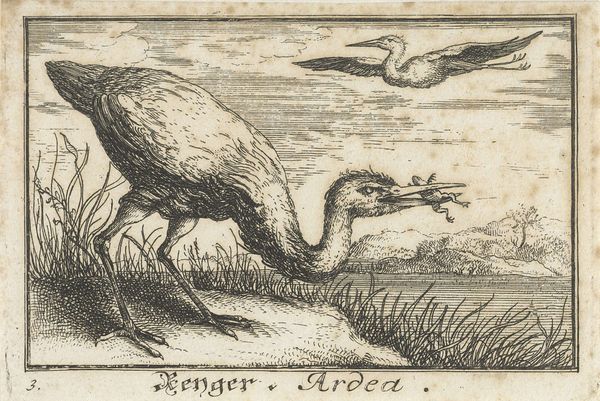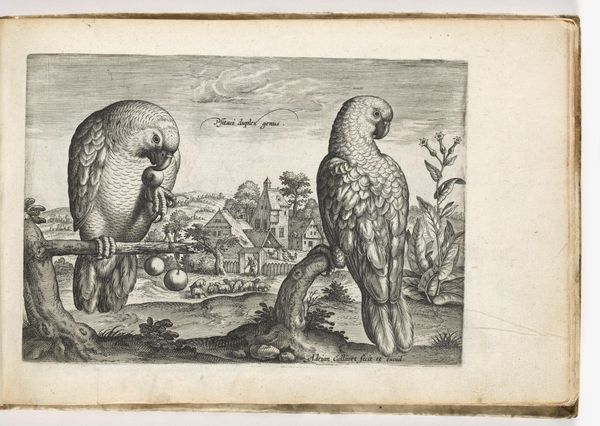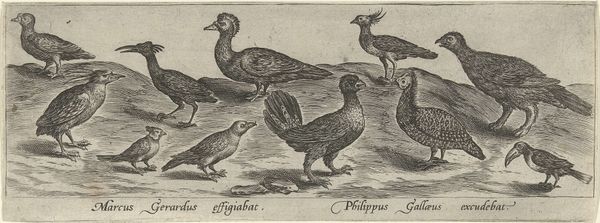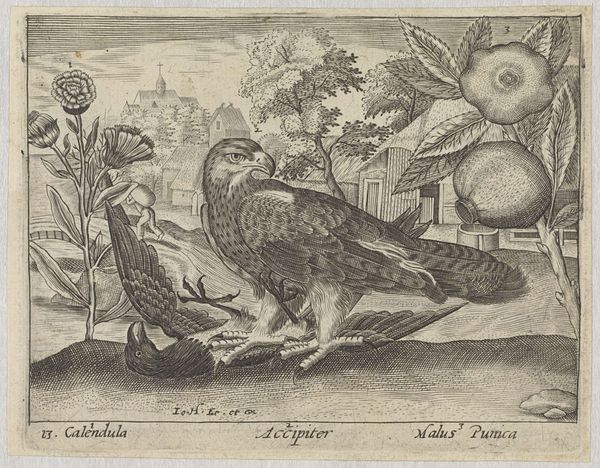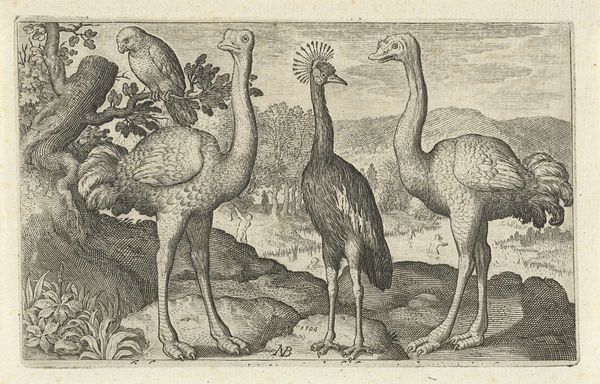
print, engraving
#
animal
#
dutch-golden-age
# print
#
landscape
#
genre-painting
#
engraving
Dimensions: width 208 mm, height 76 mm
Copyright: Rijks Museum: Open Domain
Editor: This is "Ganzen en eenden" (Geese and Ducks), a print, actually an engraving, made by Philips Galle sometime between 1547 and 1590. It depicts a gaggle of geese and ducks in a landscape. I'm immediately struck by the detail, especially considering it's an engraving. How can you create so much texture using only lines? What draws your attention to this piece? Curator: It's precisely that detail achieved through the *process* of engraving that intrigues me. Consider the labor involved in creating such a detailed image. Each line etched into the metal plate required significant skill and time. This labor is often overlooked when we focus solely on the image itself. We see the ducks, but not the hand that painstakingly brought them to life. Editor: That’s true; it's easy to miss the effort. So, how does focusing on the "hand" change how we view the print? Curator: It makes us think about the broader context of production and consumption. This wasn't fine art destined for a palace. Prints like this were more accessible, part of a burgeoning market for images. The *materiality* of the print - the paper, the ink, the very act of reproduction - speaks to a changing society where art became more widely available. Was this intended as art, or something functional, such as decor? Editor: Functional art, I like that. So, it is as much about access as it is about the geese and ducks themselves. Curator: Precisely. The content - the pastoral scene, the animals - would have resonated with a growing urban population increasingly disconnected from rural life. Prints allowed people to consume images of nature, perhaps fostering a sense of nostalgia or even a desire for a simpler life. Think about how labor and resources come into play. What do the animals feed on? Whose farmland? Editor: I didn’t consider that before. So looking at something as simple as geese, through the lens of materialism, allows us to appreciate not just the image, but also the artist's skill and even the era's social landscape and economic factors related to making, using, and seeing art. Curator: Indeed. It forces us to question the traditional boundaries of art history and appreciate the rich complexity of even the seemingly simplest image.
Comments
No comments
Be the first to comment and join the conversation on the ultimate creative platform.
